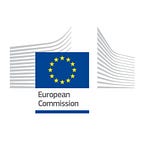Myanmar’s other humanitarian crisis: the forgotten civilians of Kachin
The conflict, dating back to 1962, raged for decades before a ceasefire in 1994. However, fighting resumed in 2011 and resulted in massive displacement of civilians caught in the crossfire. The EU provides aid to support those affected by conflict.
“I moved here in October 2013 after violence erupted in our area,” recounts Lama Htoi Ga, sitting outside her wooden shelter in the Phankhakona camp, near the town of Bhamo in Myanmar’s northern Kachin state.
“The army came to our village, firing in all directions. It was total panic. Some ran into the forest to hide, but some of us got stuck, so we hid in the church. There were some 80 families hiding with us — we stayed there for three days. The army commander threatened to kill us all, but the principal of the school managed to negotiate with him, and finally they let us go. We fled to another village, and from there a church-based organisation drove us here. Since then, it is impossible to return due to the ongoing violence: our village is on the frontline.”
While the fate of the Rohingya Muslims has attracted considerable media attention over the last year, Myanmar is host to another long-lasting conflict which is all but forgotten. Tens of thousands of people have been displaced over the last few years by fighting between the army, known as Tatmadaw, and the Kachin Independence Army (KIA), an armed ethnic group seeking independence and a more equitable share of Kachin’s very lucrative natural resources. The KIA rules vast swathes of territory along the Chinese border where the Myanmar government has no control.
The conflict, which dates back to 1962, raged for decades before a ceasefire came into effect in 1994. However, with no political progress, fighting resumed in 2011, and has since resulted in massive displacement of civilians caught in the crossfire. The year 2018 witnessed a worrying increase in the level of violence, forcing over 32 000 people to be temporarily displaced, from 33 different locations in the region.
Overall, more than 106 000 people are living in camps, and a further 20 000 live with host communities in both Kachin and the northern part of neighbouring Shan state, where fighting between the army and multiple other separatist groups is also ongoing. With the national peace process in doldrums, there is little to no hope for these displaced populations to return to their villages any time soon — even less so considering the large number of landmines littering the region. This is why the EU has funded landmine awareness projects for civilians as part of its humanitarian assistance, which otherwise focuses on the provision of food, access to water and sanitation, healthcare and shelter support. An Emergency Response Mechanism has also been established, which enables newly-displaced families to receive cash grants to cater to their immediate needs after displacement.
Violations of International Humanitarian Law are common here: earlier this year, when fighting escalated, even camps for internally displaced persons (IDPs) were caught up in the crossfire, leading to people being displaced again. Military restrictions also limit the capacity of national and international organisations to provide humanitarian assistance to those displaced — particularly in the non-government controlled areas, as the army does not allow any aid to cross into rebel-held territories.
For those displaced, moving from villages to unknown urban areas means livelihood opportunities are rare. Most IDPs work as daily labourers or in the illegal timber industry — often for half the pay of locals, as contractors are well aware of their vulnerability. Desperate, many take the risk of going back to their villages to cultivate their paddy fields during the monsoon season.
“It is very risky, as anything could happen if we come across the army, but we don’t have a choice as we don’t have enough income here,” says Lama Htoi Ga.
“We don’t enter the village because we know there are mines, so we only go to the fields. Even after five years, some of our livestock is still there, roaming free in the jungle, though many have been blown up by mines, or shot — by both armies — for food.”
Lama Htoi Ga is, however, among the more fortunate ones. In nearby Robert camp, a massive church compound home to some 4 000 people for the last seven years, most IDPs cannot even dream of seeing their villages again.
Aware of the desperate situation the civilians face, the EU has expanded its support to the people of Kachin beyond humanitarian aid to include development assistance. In addition to the €4 million addressing the immediate humanitarian needs of displaced people in Kachin and northern Shan states in 2018, €12 million were also announced in November 2018 to extend the Durable Peace Programme until 2022. Designed to promote peace and development in these conflict-affected areas, the programme includes the provision of better livelihood opportunities for those displaced by the never-ending civil war — pending a durable solution. Considering the level of violence witnessed this year, peace however seems very unlikely in the near future.
By Pierre Prakash, Regional Information Officer for Asia and the Pacific, European Civil Protection and Humanitarian Aid Operations (ECHO)
Learn more about the EU’s work in Myanmar. Find out more about EU humanitarian aid and follow us on Twitter.
